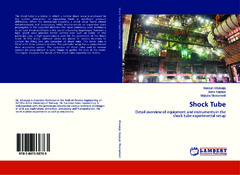Shock Tube. Detail overview of equipment and instruments in the shock tube experimental setup
Abstract
The shock tube is a device in which a normal shock wave is produced by the interaction of fluids at significantly high-pressure difference. The shock tube is comprised of two sections known as driver and driven sections. These two sections are interacted with the high-speed valve or a bursting disc. When the interaction happens, a shock wave forms almost instantaneously and propagates into the driven section, while simultaneously an expansion wave propagates in the opposite direction into the driver section. The most commonly used technique to set-up such initial conditions is the use of a bursting diaphragm; however, a high-speed valve provides better control over the event. In the given setup, a high-speed valve is used for the generation of the shock wave. In this setup, solenoid valves are placed at various locations to control the filling and the safe operation. The shock tube is fitted with three pressure sensors.First pressure sensor is placed in the driver section whereas two other pressure sensors are placed in the driven section. A T-joint is placed in the driven section to mount a specimen for the study. The particular setup has computerized data acquisition system, which can record information up to 1 MHz. The operation of the shock tube and its various sensors is programmed to auto-trigger to gather the information.
The following license file are associated with this item:


 English
English norsk
norsk